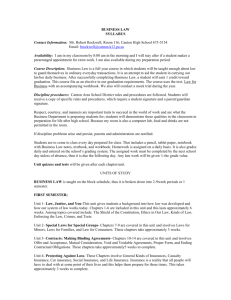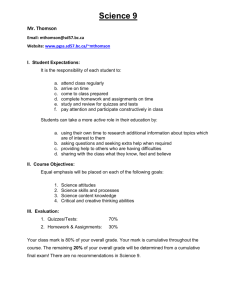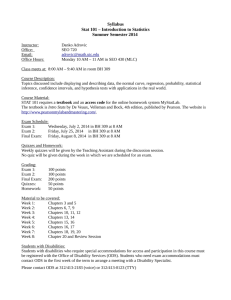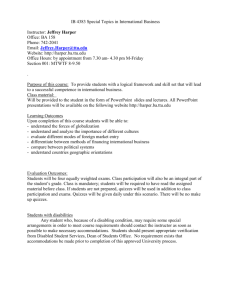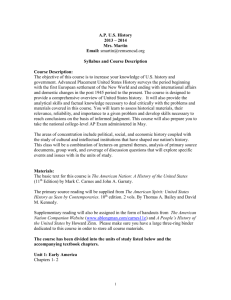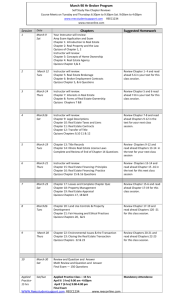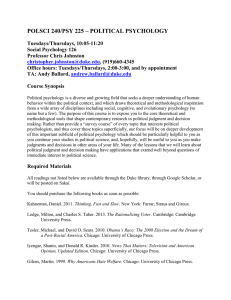Syllabus - Department of Physics
advertisement
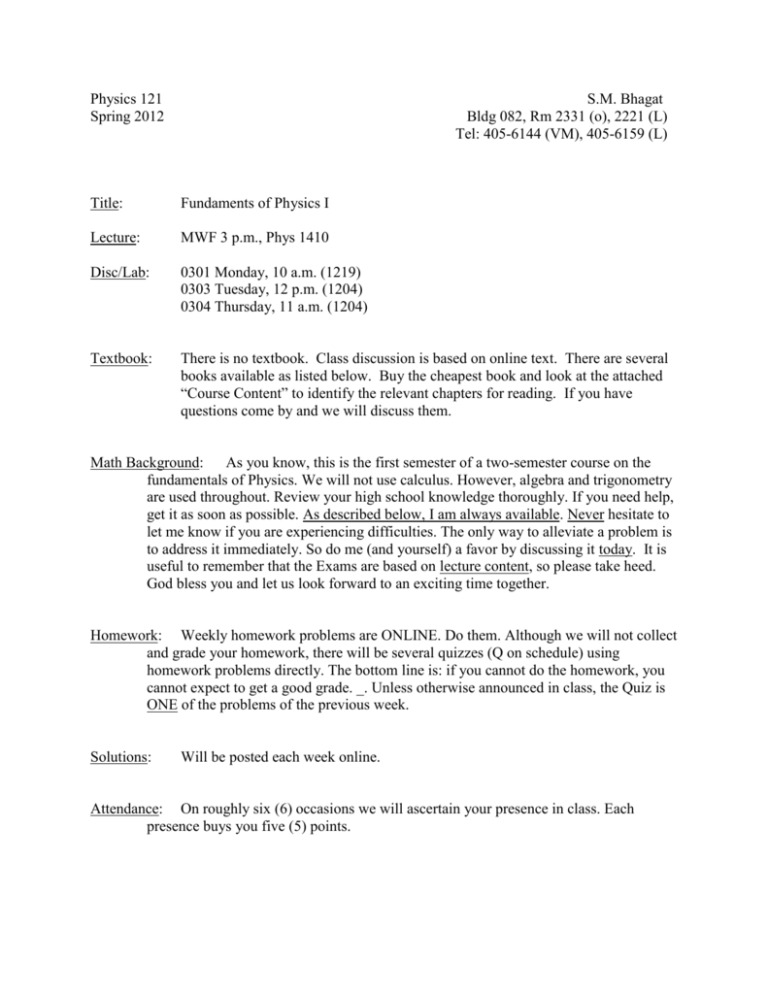
Physics 121 Spring 2012 S.M. Bhagat Bldg 082, Rm 2331 (o), 2221 (L) Tel: 405-6144 (VM), 405-6159 (L) Title: Fundaments of Physics I Lecture: MWF 3 p.m., Phys 1410 Disc/Lab: 0301 Monday, 10 a.m. (1219) 0303 Tuesday, 12 p.m. (1204) 0304 Thursday, 11 a.m. (1204) Textbook: There is no textbook. Class discussion is based on online text. There are several books available as listed below. Buy the cheapest book and look at the attached “Course Content” to identify the relevant chapters for reading. If you have questions come by and we will discuss them. Math Background: As you know, this is the first semester of a two-semester course on the fundamentals of Physics. We will not use calculus. However, algebra and trigonometry are used throughout. Review your high school knowledge thoroughly. If you need help, get it as soon as possible. As described below, I am always available. Never hesitate to let me know if you are experiencing difficulties. The only way to alleviate a problem is to address it immediately. So do me (and yourself) a favor by discussing it today. It is useful to remember that the Exams are based on lecture content, so please take heed. God bless you and let us look forward to an exciting time together. Homework: Weekly homework problems are ONLINE. Do them. Although we will not collect and grade your homework, there will be several quizzes (Q on schedule) using homework problems directly. The bottom line is: if you cannot do the homework, you cannot expect to get a good grade. _. Unless otherwise announced in class, the Quiz is ONE of the problems of the previous week. Solutions: Will be posted each week online. Attendance: On roughly six (6) occasions we will ascertain your presence in class. Each presence buys you five (5) points. Reading List: 1. College Physics – Serway/Faughn Chapters 1-8: 10-13 Thompson, Brooks/Cole 2. Physics – Cutnell and Johnson Chapters 1-10; 12-15 Wiley 3. Essential College Physics – Rex and Wolfson Chapters 1-9; 12-14 Addison-Wesley 4. Physics – Walker Chapters 1-13; 16-18 Prentice Hall 5. Contemporary College Physics – Jones/Childers Chapters 1-9; 11-14 McGraw Hill 6. Physics – Giambattista, Richardson, Richardson Chapters 1-8; 13-15 McGraw Hill Test Questions/Review: About two weeks prior to every exam a set of test questions will be posted online. This should give you time to develop your answers prior to the review, which is typically scheduled for Tuesday prior to the Exam. Tests: a. There will be three (3) examinations, each lasting a full period. Dates are in the attached schedule. b. Ten (10) 10-minute quizzes during class (Q on schedule). c. Avoid make-ups. d. The final exam date T.B.A. You cannot pass without taking the final. Laboratory: The experiments in the laboratory are an integral part of this course. Ten (10) experiments are scheduled. All must be done. You cannot pass this course unless you do every experiment, and submit a report. Further details are on a separate sheet. Grading: Your grade is figured out as follows. Best 8 of 10 quizzes Lab Reports Best 2 of 3 “hourlies” Final Exam *Discussion Attendance *IN MY OFFICE 100 100 200 200 ≤50 (Bonus) ≤30 Extra Help: a. The instructor is available for discussion at all times. I am usually in my office (Z2331) or laboratory (Z-2221) from about 9:30 a.m. to about 6:30 p.m., Monday through Friday. Feel free to walk in. If you desire an especially extended visit, call 56144 or 56159 to ensure that I have a time slot free. If you have any difficulty at all, never hesitate to drop by. Also, I keep a record of your visits. You can earn 10 percent of your earned grade points if you have 5 (five) visits prior to an exam. You may call me at home (301-345-5308) but not later than 10 p.m. b. Coming for a visit? Make it A.S.A.P. God Bless You! c. Slawsky Clinic is an excellent (free) tutoring service. It is staffed by very dedicated physicists who can help you improve your problem solving skills. Do take advantage of this highly acclaimed feature of the physics department. d. Guided Study Sessions may be available. Details will follow as they develop.



